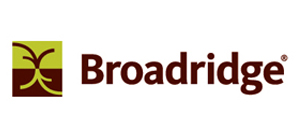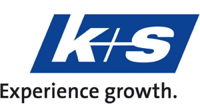Welcome to VIPsight America - Canada
 |
|
| John Dinner |
21 April 2012
Governance best practices and board performance assessments
By John T. Dinner
One of the most memorable board performance assessments I conducted for a client uncovered the fact that directors were evenly split on their support for the CEO. Even though the process wasn’t intended to evaluate CEO performance, it was clear that the board was completely divided as to whether the CEO’s time was up or not.
In reporting back to the client, I strongly recommended that a quick resolution was required: this division influenced every decision and coloured every discussion. Paralysis had set in, factions had formed and no meaningful action was being taken to wrestle a critical issue to the ground.
This example is a bit extreme, but points to the need for boards to assess their performance. The assessment itself probably didn’t uncover this issue for the first time; it did put it in black and white and created a burning platform for action.
While many boards see performance evaluations as an essential safety valve to ensure key issues are identified and positioned for resolution, many other boards are motivated by a felt need to live up to governance best practices, of which board assessment are just one of many. While the motivation for looking inwardly at the quality of governance is important, what is even more critical is the rigour with which such evaluations are conducted.
In my consulting work, I’m regularly struck by the confusion that directors have between performance evaluations of the full Board and those for individual Directors (I’ll discuss the latter in a future column). These are and should be distinct processes that assess performance for very different purposes and against very different criteria.
The primary purpose for a board assessment process is to provide the means to identify issues impacting performance and to provide accountability to act on the findings to improve board effectiveness. Their effectiveness is really determined by the degree of rigour applied.
Many boards do little more than have directors complete a generic survey that poses questions about common governance success factors. This approach can identify issues impacting performance; often, these surveys are intended to show proof of best practice compliance.
A board performance assessment should be part of a broader commitment to good governance and the continual improvement by the board to improve its oversight. This is done by raising the performance bar and identifying and, where necessary, fixing a problem. Despite the potential for positive outcomes, many boards are reluctant to ask the tough questions.
To guard against real or perceived assessment risks, there are some important issues that boards should consider and address explicitly. Ownership of the process should rest squarely with the Board, backed by a commitment to assess performance by using relevant and objective criteria. The process needs to be convenient, meaningful and constructive given demands on most directors’ time. It also needs to be sufficiently comprehensive to cover all key performance issues and a confidential exercise so as to promote candor.
The guardedness many boards show when considering the idea of evaluating their own performance can be mitigated by taking time to make sure these and other issues are fully considered, discussed and resolved.
In terms of making the assessment meaningful, the process should focus on how the board is structured or organized, how the board does its work and how directors and management work together.
Boards often stand to benefit from education relative to the purpose of Board assessments and the process that will be used to undertake this work. This education would cover the context and purpose of undertaking the Board performance assessment, the process the assessment will follow, key issues such as confidentiality, director and management participation, and the like.
While assessment surveys are an essential tool to ensuring a meaningful board performance assessment, they are just the starting point. I use them to identify key issues and themes as opposed to relying on them to tell the whole story. Most directors view surveys as a task to be completed; therefore, they rarely elicit the thoughtful insights that are essential to effective and accurate board performance assessments.
In addition to surveys, my recommended process is to conduct follow-up interviews with all assessment participants to gain greater insight into the issues the survey uncovers. And as much as possible, I try to observe the board in action by attending regularly scheduled meetings to validate and better understand the information I derive from the surveys and interviews.
All of the input is of little value if it doesn’t produce meaningful recommendations and a commitment to act on opportunities for improved performance. Ideally, a board will prioritize needed improvements and create a work plan to ensure that traction occurs.
By the way, the client referenced at the start of the column did just that: the whole board met to work through the issues with a view to coming to some sort of resolution. Today, that organization has a new CEO and the board has improved its performance on several other fronts as well.
VIPsight Archives America - Canada
30 January 2012
Board Culture trumps structure and process
By John T. Dinner
When looking back at the evolution of governance over the past 20 years or so, there’s been an interesting and marked progression from a structural focus in the early days to a recognition that board work processes have a significant impact on good governance. More recently, there’s been a recognition that board culture is the third, and perhaps most important, leg of the governance stool.
Board culture really speaks to the group dynamics and boardroom behaviours among directors and with management: the free expression of ideas and issues, the trust and confidence among directors and with management, and a collective focus on the organization’s mission and vision in the decision-making process.
The basic fiduciary requirement that directors act in the best interests of the corporation and exercise a duty of care is often viewed in legal terms. Similarly, director independence has been defined in terms of structural perspective with respect to management. Both have significant behavioural and board culture implications that trump any legal or structural requirements when it comes to board effectiveness.
Rather than defining director independence in terms of an individual’s relationship with management, real, or behavioural independence, is more about a director’s ability to exercise meaningful oversight and holding management accountable, without sacrificing the ability to also partner with management to help the organization deliver on its goals.
As much as legislation, regulations and governance guidelines seek to create a standard or benchmark for governance, director behaviour and the boardroom dynamic is not something that can be mandated. While Sarbanes-Oxley, the Securities Exchange Commission’s governance regime introduced in 2002, has transformed and helped to give better focus to the work of many boards, legislation can really only get at structure and process. Behaviour in the boardroom and personal conduct cannot be easily legislated. And even if it could be, it would be virtually impossible to enforce.
When I think of healthy boardroom behavior and a constructure, partnership dynamic between directors and management, I look for substantive evidence that:
- Directors have the opportunity and the freedom to ask the substantive and relevant questions that will give them the necessary comfort and confidence that they have fulfilled their oversight obligations;
- the relationship between the Board and Management is characterized by the highest possible level of trust and open communication;
- it is not acceptable for Directors to simply conform, acquiesce, criticize or control matters during boardroom deliberations;
- the Board understand their role and that of Management and guards against becoming operationally focused, micromanaging or acting in a manner that is passive and subservient;
- Management regards the Board as a strategic partner and asset and actively seeks the advice and counsel of Directors; and,
- meetings characterized by fulsome dialogue and debate with Management respecting the need for Directors to conduct meaningful due diligence.
At the heart of a healthy boardroom behavior is the degree of candor between the Board and Management. By candor, I mean that freedom with which directors are able to raise issues and speak out. A lack of candor slows down decision-making and represents one of the most significant obstacles to board success. A lack of candor blocks smart ideas, fast action, and directors from effectively using their skills and experience.
Candor helps to ensure all views and issues are put forward for consideration so that directors are equipped to make the best decision possible relative to organizational strategy and other corporate considerations. This inherently means that a healthy board culture exists when contrarian views, various options and constructive challenging or testing of conventional thinking and the status quo are welcomed, encouraged and expected.
Poor performance in the boardroom is usually indicative of a failure to appropriately recruit, orient, and integrate new board members. Without being properly equipped, board members may not understand their fiduciary responsibilities and individual directors may not embrace board work as teamwork. Many boards, though properly structured and supported with governance best practices, still encounter troublesome behaviors that point to poor people skills on the part of individual directors.
If a good defense against director liability is a good offense, boards put themselves at risk if they don’t take responsibility for their own performance. Key to this is adopting lead governance processes and practices, implementing them effectively, and assessing whether they are contributing to the board’s performance in meaningful ways – all with a high degree of candor.
To help promote common understanding of and adherence to what constitutes acceptable or required behavior, many boards adopt an explicit code of conduct that define the standards to which directors must adhere. Again, a compliance approach to board culture does not necessarily engender constructive group dynamics and respectful relationships.
Codes of conduct and other rules-based approaches to influencing director behavior cannot address the common cultural ailments faced by many boards:
- a sense that the Board is spinning its wheels and rehashing old issues;
- discussion that is based on opinion rather than factual data;
- long and protracted discussions that lose focus on the original topic;
- the frequent introduction of “wildcard” issues not originally on the meeting agenda;
- an inability to explain or strong defend a Board’s decision;
- a lack of support by every director of the collective decision of the Board; and,
- a nagging feeling that decisions do not represent the best thinking of the Board.
Evidence of a healthy board culture most often shows up in the decision-making process. Once a board has reached a decision, all directors need to take ownership for and support the outcome, regardless of personal views. Individual directors need to respect the collective nature of board decision-making, recognizing that there is rarely one right answer or approach to addressing a particular issue or opportunity. While good debate and deliberation are hallmarks of a healthy board within the confines of the boardroom, director solidarity in public is also a critical requirement.
As much as board structure and governance processes play a critical role in the decision-making process, it is really the boardroom culture that will determine the quality of those decisions, the health and effectiveness of the board and an organization’s success in achieving its vision.
31 August 2011
Board Culture trumps structure and process
By John T. Dinner
When looking back at the evolution of governance over the past 20 years or so, there’s been an interesting and marked progression from a structural focus in the early days to a recognition that board work processes have a significant impact on good governance. More recently, there’s been a recognition that board culture is the third, and perhaps most important, leg of the governance stool.
Board culture really speaks to the group dynamics and boardroom behaviours among directors and with management: the free expression of ideas and issues, the trust and confidence among directors and with management, and a collective focus on the organization’s mission and vision in the decision-making process.
The basic fiduciary requirement that directors act in the best interests of the corporation and exercise a duty of care is often viewed in legal terms. Similarly, director independence has been defined in terms of structural perspective with respect to management. Both have significant behavioural and board culture implications that trump any legal or structural requirements when it comes to board effectiveness.
Rather than defining director independence in terms of an individual’s relationship with management, real, or behavioural independence, is more about a director’s ability to exercise meaningful oversight and holding management accountable, without sacrificing the ability to also partner with management to help the organization deliver on its goals.
As much as legislation, regulations and governance guidelines seek to create a standard or benchmark for governance, director behaviour and the boardroom dynamic is not something that can be mandated. While Sarbanes-Oxley, the Securities Exchange Commission’s governance regime introduced in 2002, has transformed and helped to give better focus to the work of many boards, legislation can really only get at structure and process. Behaviour in the boardroom and personal conduct cannot be easily legislated. And even if it could be, it would be virtually impossible to enforce.
When I think of healthy boardroom behavior and a constructure, partnership dynamic between directors and management, I look for substantive evidence that:
- Directors have the opportunity and the freedom to ask the substantive and relevant questions that will give them the necessary comfort and confidence that they have fulfilled their oversight obligations;
- the relationship between the Board and Management is characterized by the highest possible level of trust and open communication;
- it is not acceptable for Directors to simply conform, acquiesce, criticize or control matters during boardroom deliberations;
- the Board understand their role and that of Management and guards against becoming operationally focused, micromanaging or acting in a manner that is passive and subservient;
- Management regards the Board as a strategic partner and asset and actively seeks the advice and counsel of Directors; and,
- meetings characterized by fulsome dialogue and debate with Management respecting the need for Directors to conduct meaningful due diligence.
At the heart of a healthy boardroom behavior is the degree of candor between the Board and Management. By candor, I mean that freedom with which directors are able to raise issues and speak out. A lack of candor slows down decision-making and represents one of the most significant obstacles to board success. A lack of candor blocks smart ideas, fast action, and directors from effectively using their skills and experience.
Candor helps to ensure all views and issues are put forward for consideration so that directors are equipped to make the best decision possible relative to organizational strategy and other corporate considerations. This inherently means that a healthy board culture exists when contrarian views, various options and constructive challenging or testing of conventional thinking and the status quo are welcomed, encouraged and expected.
Poor performance in the boardroom is usually indicative of a failure to appropriately recruit, orient, and integrate new board members. Without being properly equipped, board members may not understand their fiduciary responsibilities and individual directors may not embrace board work as teamwork. Many boards, though properly structured and supported with governance best practices, still encounter troublesome behaviors that point to poor people skills on the part of individual directors.
If a good defense against director liability is a good offense, boards put themselves at risk if they don’t take responsibility for their own performance. Key to this is adopting lead governance processes and practices, implementing them effectively, and assessing whether they are contributing to the board’s performance in meaningful ways – all with a high degree of candor.
To help promote common understanding of and adherence to what constitutes acceptable or required behavior, many boards adopt an explicit code of conduct that define the standards to which directors must adhere. Again, a compliance approach to board culture does not necessarily engender constructive group dynamics and respectful relationships.
Codes of conduct and other rules-based approaches to influencing director behavior cannot address the common cultural ailments faced by many boards:
- a sense that the Board is spinning its wheels and rehashing old issues;
- discussion that is based on opinion rather than factual data;
- long and protracted discussions that lose focus on the original topic;
- the frequent introduction of “wildcard” issues not originally on the meeting agenda;
- an inability to explain or strong defend a Board’s decision;
- a lack of support by every director of the collective decision of the Board; and,
- a nagging feeling that decisions do not represent the best thinking of the Board.
Evidence of a healthy board culture most often shows up in the decision-making process. Once a board has reached a decision, all directors need to take ownership for and support the outcome, regardless of personal views. Individual directors need to respect the collective nature of board decision-making, recognizing that there is rarely one right answer or approach to addressing a particular issue or opportunity. While good debate and deliberation are hallmarks of a healthy board within the confines of the boardroom, director solidarity in public is also a critical requirement.
As much as board structure and governance processes play a critical role in the decision-making process, it is really the boardroom culture that will determine the quality of those decisions, the health and effectiveness of the board and an organization’s success in achieving its vision.
****
John Dinner, president of John T. Dinner Board Governance Services (www.boardgovernance.ca), works with boards across all sectors to help them improve the effectiveness with which they carry out their oversight accountabilities. He can be reached at This email address is being protected from spambots. You need JavaScript enabled to view it.















